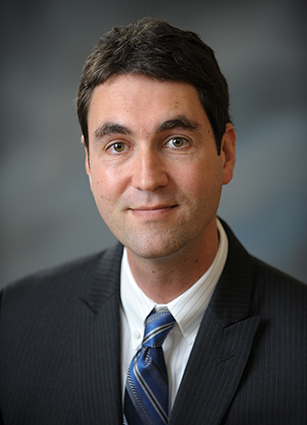Sep 27, 2024
Airing the Facts — New Report Highlights Air Pollution Trends in the Prairie State
In June of 2023, skies dimmed across Illinois as a thick, mysterious haze gradually filled the air. The peculiar event wasn’t the result of a chemical spill, a toxic plant release or any other disaster occurring in Illinois. Instead, it was the long shadow of an environmental disaster happening hundreds of miles away, as raging fires claimed large swaths of forest across western Canada.

“In every single region of Illinois, pollution during that portion of June was higher than it had ever been in the previous five years,” said Julian Reif (right), an associate professor of finance at Gies, who measured the effects of the fires as part of a multi-year study of air pollution trends in Illinois. The study was recently featured in a policy spotlight by the University of Illinois System’s Institute of Government and Public Affairs, where Reif is a senior scholar, and it offered a number of interesting insights regarding the state’s air quality trends and their impact on public health.
Using EPA-reported data, the study tracked air pollution trends across six distinct regions — Champaign-Urbana, Chicago-Naperville-Elgin, Decatur, Peoria, Rockford and Springfield. Understanding those trends is important, because poor air quality can have a significant impact on public health, leading to lung cancer and other medical conditions.
In 2019, the World Health Organization estimated that 4.2 million deaths around the world were caused by air pollution. And Illinois residents are not immune to its effects. In fact, researchers believe air pollution in Chicago could be responsible for about five percent of premature deaths. Fortunately for residents of the Windy City, however, the report shows that pollution trends are going the right way.
As a hub for air, rail and other ground transportation, Chicago has noticeably higher pollution levels than any other region in the state. That’s exacerbated by the city’s dense population and location next to a vast lake, where temperature inversions often trap air over the city. However, the study, which examines a number of pollutants, including ozone, carbon monoxide and fine particulate matter, revealed that the city has seen a 25% reduction in air pollutants levels over the past 20 years. That’s a significant improvement, which could ultimately lead to significant increases in life expectancy and quality of life.
What’s behind the big drop? “I would love to know the answer to that question,” said Reif, whose study focused on pollution trends, rather than their causes. He speculates, however, that there could be a number of causes, including more stringent EPA regulations that reduce harmful emissions from power plants. “It’s also possible that, perhaps, the switch to more electric vehicles is beginning to have an effect.”
All of those things could impact the release of particulates, which is the main pollutant impacting air quality the city. Ozone is the predominant pollutant in the other five regions. In those areas, the air quality has remained largely unchanged. However, those regions have always enjoyed better air quality than Chicago, where — despite impressive gains, air pollution levels are still ranked as moderate.
So, what’s the big takeaway from the study?
“I think it’s a bit of a nuanced message,” said Reif, who is also a scholar with Gies’ Health Care Research Initiative and the Office of Risk Management & Insurance Research. “On the one hand, on average, overall pollution levels are going down in our most populated city in the state.”
However, those improvements can be disrupted — and potentially reversed — by new outside threats, like the Canadian wildfires.
“It’s possible that we may see more fires like this in the future,” said Reif. “It depends what temperature levels look like. If there are higher average temperatures on Earth because of global warming, we may expect to see more of these events.”
And that could lead to more adverse health consequences — for Illinois, and beyond.
